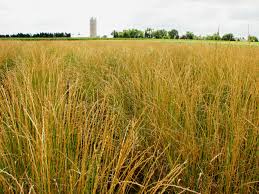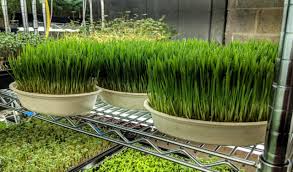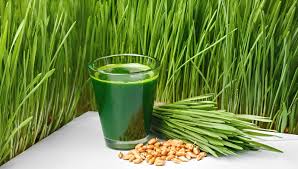Wheatgrass, scientifically known as Triticum aestivum, is a type of young grass that originates from the common wheat plant. Despite its humble appearance, this unassuming grass packs a powerful punch of essential nutrients, making it a popular choice for those seeking to enhance their health and well-being.
Wheatgrass is commonly consumed in the form of fresh juice or as a powdered supplement, offering a convenient and concentrated source of nutrients.
This vibrant green grass is a veritable treasure trove of vitamins, including A, C, and E. These vitamins play crucial roles in maintaining healthy skin, bolstering the immune system, and protecting cells from damage. Alongside vitamins, wheatgrass boasts an array of important minerals like iron, magnesium, and calcium. These minerals contribute to the development of strong bones, support nerve function, and aid in various bodily processes.
One of the standout features of wheatgrass is its high content of chlorophyll, the pigment responsible for its rich green color. Chlorophyll is often referred to as nature’s detoxifier, as it is believed to help cleanse the blood and promote efficient digestion. Some proponents of wheatgrass suggest that its consumption can lead to increased energy levels and a reduction in fatigue, although scientific evidence supporting these claims is still evolving.
The consumption of wheatgrass is typically facilitated through juicing or incorporating wheatgrass powder into smoothies and other dishes. However, it’s important to recognize that wheatgrass should complement, not replace, a balanced diet. While it can provide an additional source of nutrients, it’s not a substitute for a diverse array of foods that contribute to overall health.
As with any dietary supplement, it’s advisable to consult a healthcare professional before introducing wheatgrass into your routine, especially if you have existing health conditions or are taking medications. Individuals with allergies to wheat or grasses should exercise caution when considering wheatgrass consumption.
In addition, wheatgrass, or Triticum aestivum, is a nutrient-dense young grass with an impressive nutritional profile. Its abundance of vitamins, minerals, and chlorophyll contribute to potential health benefits, though it’s essential to approach it as a supplementary addition to a well-rounded diet. Prioritizing consultation with a healthcare provider will help you make informed decisions about incorporating wheatgrass into your lifestyle.
Read Also: How to Make a Pomegranate Plant Produce Fruit
Growing Wheatgrass

Growing wheatgrass at home can be a rewarding and enjoyable experience. Here’s a simple guide to get you started:
1. Choose Your Wheatgrass Seeds: Look for high-quality wheatgrass seeds that are specifically meant for sprouting. You can find these at health food stores, gardening centers, or online.
2. Select a Growing Container: Choose a shallow tray or container with drainage holes to prevent waterlogging. A flat seed tray or even a shallow dish will work well.
3. Prepare the Soil: Fill the chosen container with a growing medium. You can use potting soil, coconut coir, or a mix of potting soil and vermiculite. Ensure the soil is well-draining and slightly moist.
4. Plant the Seeds: Evenly spread the wheatgrass seeds over the soil, making sure they’re not too crowded. Gently press the seeds into the soil with your hand.
5. Cover the Seeds: Lightly cover the seeds with a thin layer of soil, and then place a damp paper towel or cloth over the seeds. This helps to keep the seeds moist during germination.
6. Germination: Keep the seeds covered for the first few days to encourage germination. Place the container in a warm, bright area, but avoid direct sunlight during this stage.
7. Remove the Cover: Once you see the tiny green shoots emerging (usually within a few days), remove the cover and place the container in a spot with indirect sunlight. A windowsill with filtered light is a good option.
8. Watering: Water the wheatgrass regularly to keep the soil consistently moist, but not soggy. Use a spray bottle or a gentle watering can to avoid dislodging the seeds or young shoots.
9. Provide Light: Wheatgrass loves natural light. If possible, place the container in a location with plenty of indirect sunlight. If sunlight is limited, consider using a grow light to supplement.
10. Harvesting: Once the wheatgrass reaches a height of about 6-8 inches (15-20 cm), it’s ready for harvesting. This usually takes about 7-10 days from planting. Use a pair of clean scissors to cut the wheatgrass just above the soil line.
11. Consuming: Wheatgrass is best consumed fresh. You can juice the wheatgrass to make a nutrient-rich drink or add it to smoothies for an extra health boost.
12. Replanting: After harvesting, you can choose to replant the same container with fresh soil and seeds for another batch of wheatgrass.
Remember that wheatgrass grows quickly, so it requires consistent attention. Keep an eye on the moisture levels and provide the necessary light to ensure healthy growth. Enjoy the satisfaction of growing your own nutrient-packed wheatgrass right at home.
Caring for Wheatgrass

Caring for wheatgrass involves a few key steps to ensure healthy growth and a bountiful harvest. Here’s a guide on how to care for your wheatgrass:
1. Watering: Wheatgrass prefers consistently moist soil. Water the grass gently to prevent dislodging the seeds or young shoots. Keep the soil damp but not waterlogged. A spray bottle or a gentle watering can work well for this.
2. Light: Place your wheatgrass in a location that receives bright, indirect sunlight. If natural light is limited, you can use a grow light to provide sufficient light for healthy growth. Rotate the tray occasionally to ensure even exposure to light.
3. Temperature: Wheatgrass thrives in moderate temperatures. Aim for a temperature range between 60-75°F (15-24°C) for optimal growth. Avoid extreme heat or cold, as it can stress the grass.
4. Air Circulation: Adequate air circulation helps prevent mold growth and encourages sturdy stems. Make sure there’s good ventilation in the area where you’re growing your wheatgrass.
5. Harvesting: Wheatgrass is typically ready for harvesting when it reaches a height of 6-8 inches (15-20 cm) and displays its second leaf. Use clean scissors to cut the grass just above the soil line. Harvesting at the right stage ensures maximum nutrient content.
6. Replanting: If you plan to replant the same container for another batch of wheatgrass, clean the container thoroughly and provide fresh soil. Avoid using the same soil for consecutive batches, as it may become depleted of nutrients.
7. Fertilizing: Wheatgrass usually doesn’t require additional fertilization during its short growing cycle. The initial soil mix should provide sufficient nutrients for healthy growth.
8. Pests and Diseases: Keep an eye out for signs of pests or diseases. Common issues include mold, fungus, and pests like aphids. If you notice any problems, remove affected blades of grass and improve air circulation to prevent further issues.
9. Maintenance: Trim any discolored or damaged blades of grass to maintain the overall health and appearance of your wheatgrass.
10. Cleaning and Sterilization: Regularly clean the growing container to prevent the buildup of bacteria and mold. Sterilize the container with a diluted bleach solution or by using hot water and soap before each new planting.
11. Downtime: Allow your growing tray to rest between batches of wheatgrass. This allows the soil to recover and prevents the accumulation of harmful organisms.
12. Dispose of Spent Soil: After a few batches, replace the growing medium with fresh soil to ensure the availability of nutrients for your wheatgrass.
By following these care tips, you’ll be able to grow vibrant and nutritious wheatgrass that’s perfect for juicing or adding to your favorite recipes. Remember that each batch of wheatgrass has a relatively short growing cycle, so you can enjoy a continuous supply by staggering your plantings.
Read Also: How to Make Fruit Trees Produce Faster
Benefits of Growing Wheatgrass

Here are eight wonderful benefits of incorporating wheatgrass into your diet:
1. Nutrient Powerhouse: Wheatgrass is loaded with essential nutrients like vitamins A, C, and E, as well as minerals such as iron, magnesium, and calcium. These nutrients support overall health and well-being.
2. Detoxification Support: The chlorophyll in wheatgrass is believed to aid in detoxifying the body by removing toxins and impurities from the bloodstream. This can contribute to improved digestion and a cleaner internal environment.
3. Boosts Immune System: The vitamins and antioxidants in wheatgrass help strengthen the immune system, making your body better equipped to fight off infections and illnesses.
4. Skin Health: Wheatgrass’s nutrient profile, particularly its vitamin E content, promotes healthy skin by supporting collagen production, reducing the appearance of wrinkles, and helping to maintain a youthful complexion.
5. Alkalizing Properties: Wheatgrass is often considered alkalizing, helping to balance the body’s pH levels. This can have a positive impact on overall health and may reduce the risk of chronic diseases.
6. Energy and Vitality: Some individuals claim that consuming wheatgrass provides a natural energy boost. While more research is needed, the nutrients in wheatgrass may contribute to increased vitality and reduced fatigue.
7. Digestive Health: The fiber content in wheatgrass can aid in digestion and promote regular bowel movements. It may also help alleviate symptoms of digestive discomfort.
8. Antioxidant Support: Wheatgrass contains various antioxidants that help combat oxidative stress and protect cells from damage. Antioxidants contribute to long-term health and may even play a role in reducing the risk of chronic diseases.
Remember that individual responses to wheatgrass may vary, and it’s important to consult a healthcare professional before making any significant changes to your diet. While wheatgrass offers potential benefits, it should be considered a supplement to a balanced diet rather than a replacement for wholesome foods.
Read Also: Relationship Marketing Process and Approaches to the Study of Marketing
